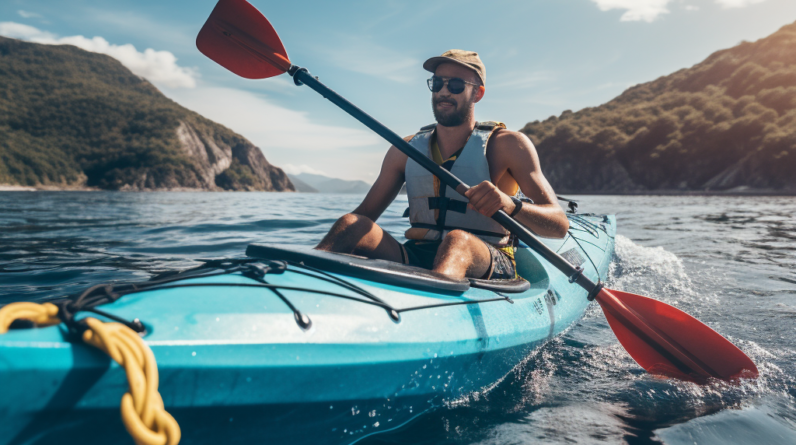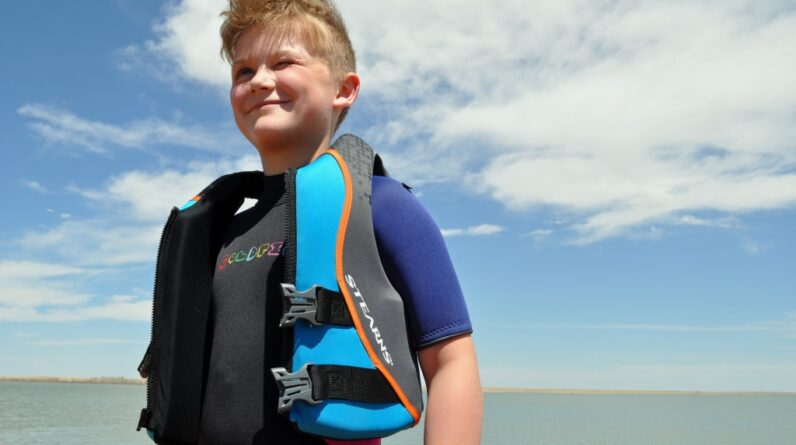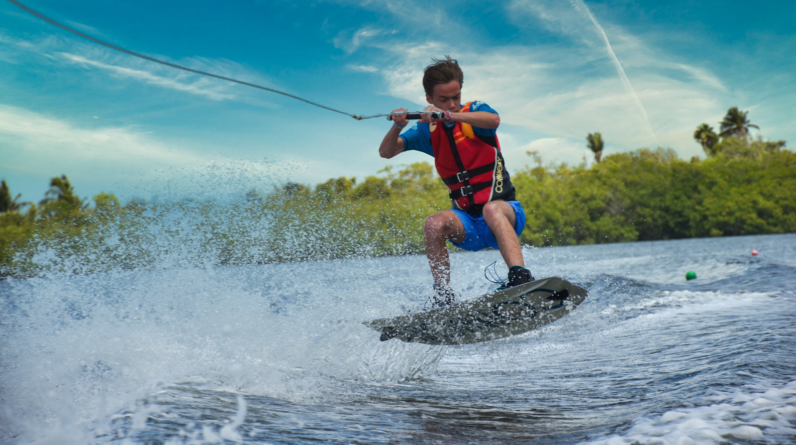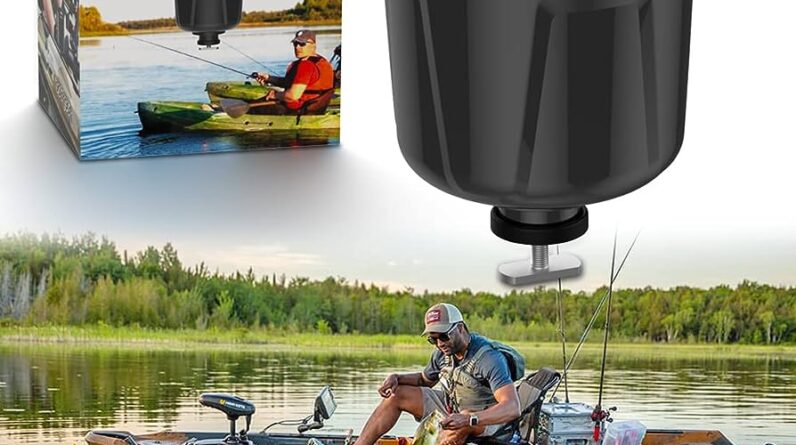
When it comes to enjoying the thrilling adventure of kiteboarding in open water, ensuring your safety should be your number one priority. With the wind on your side and waves beneath your board, it’s easy to get caught up in the excitement, but keeping yourself protected is essential. From wearing a well-fitted life jacket to staying aware of weather conditions, this article will guide you through the must-know safety measures that will help you make the most of your kiteboarding experience while staying safe on the water.

This image is property of wakeupstoked.com.
Safety Gear
Helmet
When kiteboarding in open water, it is crucial to prioritize your safety by wearing a helmet. Helmets protect your head from any potential impact or injuries that may occur during your kiteboarding session. Even though open water may seem vast and free, accidents can happen, so it’s better to be safe than sorry. Investing in a high-quality helmet that fits properly is essential to ensure maximum protection.
Life Jacket
Another crucial piece of safety gear to wear while kiteboarding is a life jacket. A life jacket provides buoyancy and ensures that you stay afloat in case of any unexpected falls or accidents. It is especially important for beginners or anyone who may not have strong swimming skills. Always choose a Coast Guard-approved life jacket that fits snugly but allows for proper movement.
Harness
A harness is an essential piece of safety gear for kiteboarding, as it connects you to the kite and provides stability and control. When choosing a harness, opt for one that fits comfortably around your waist and thighs without restricting movement. The harness should evenly distribute the pull of the kite across your body, preventing strain on your back and maintaining control while riding.
Wetsuit
Wearing a wetsuit is not only about comfort; it also ensures your safety while kiteboarding in open water. Wetsuits provide thermal protection, keeping you warm even in colder water temperatures. They also offer a layer of protection against any potential scrapes or cuts from equipment or marine life. Make sure your wetsuit fits properly and provides adequate coverage to keep you comfortable and safe throughout your kiteboarding session.
Foot Protection
Protecting your feet is crucial when kiteboarding in open water, as you might encounter sharp objects or uneven surfaces hidden beneath the water’s surface. Wearing appropriate foot protection, such as neoprene booties or water shoes, helps guard against potential injuries. These protective footwear options also provide extra traction, ensuring a stable grip on the board, enhancing your overall safety while kiteboarding.
Impact Vest
An impact vest is an additional safety gear option that helps protect your torso from any potential impacts or injuries. It provides extra flotation and can assist in keeping your head above water in case of a fall or accident. Impact vests are typically worn by beginners or those who prefer additional buoyancy during their kiteboarding session. Choose an impact vest that fits snugly but allows for proper movement of your arms and shoulders.
Ear Protection
Kiteboarding in open water can expose your ears to wind and water, leading to discomfort or even ear infections. Using ear protection, such as earplugs or neoprene ear covers, can help prevent any potential issues. These protective measures can reduce the risk of water entering your ears, keeping them dry and comfortable even during prolonged kiteboarding sessions. Choose ear protection that fits securely and is designed specifically for water activities.
Weather Conditions
Check Wind Strength and Direction
Before heading out for a kiteboarding session, it is essential to check the wind strength and direction. Understanding the wind conditions will help you determine the type and size of kite to use, ensuring that you have enough power for your session without being overpowered. Use a reliable wind meter or check local weather reports to gather accurate information about the wind conditions at your selected kiteboarding spot.
Be Aware of Local Weather Patterns
Every region has its unique weather patterns that can influence kiteboarding conditions. Familiarize yourself with the weather patterns in your kiteboarding area to make informed decisions about when and where to kite. Some locations may have consistent winds during certain times of the year, while others may experience unpredictable weather changes. By understanding the local weather patterns, you can avoid potential risks and ensure a safer kiteboarding experience.
Avoid Extreme Weather
While it’s tempting to chase extreme weather conditions for an adrenaline-filled kiteboarding experience, it is crucial to prioritize your safety. Avoid kiteboarding during severe storms, lightning, or strong squalls, as these weather conditions can be highly dangerous. Instead, choose days with more favorable weather conditions, moderate winds, and clear skies, which will provide a safer and more enjoyable kiteboarding session.
Keep an Eye on Changing Weather Conditions
Even if the weather conditions seem ideal when you begin your kiteboarding session, it’s essential to monitor and be aware of any changes in the weather. Weather can be unpredictable, and conditions can change rapidly, affecting the safety of your kiteboarding experience. Keep a constant eye on the sky and watch for any signs of changing wind patterns, dark clouds, or sudden temperature drops. If the weather worsens, it is safer to return to shore and wait for more favorable conditions to resume your session.
Preparation
Assess Your Skills
Before venturing into kiteboarding in open water, it is crucial to assess your skills and abilities honestly. Be aware of your level of experience and expertise in the sport and choose suitable kiteboarding locations accordingly. Beginners should stick to calmer water and less crowded areas, while advanced riders can explore more challenging conditions. Evaluating your skills helps you make appropriate choices and ensures a safer and more enjoyable kiteboarding experience.
Take Lessons
Regardless of your skill level, it is always beneficial to take kiteboarding lessons from a certified instructor. Professional instruction can help improve your technique, increase your understanding of safety measures, and teach you how to handle unexpected situations effectively. Lessons also provide an opportunity to learn about the gear, the wind, and other important aspects of kiteboarding. Investing time in learning from experts will enhance your skills and boost your confidence on the water.
Know the Location
Before setting up your gear and launching into the water, take the time to familiarize yourself with the kiteboarding location. Study the layout of the beach or launch area, paying attention to any potential hazards, such as reefs, rocks, or shallow areas. Understand the currents, tides, and any specific rules or regulations for the kiteboarding spot you intend to use. Knowing the location thoroughly enables you to anticipate challenges and make informed decisions during your kiteboarding session.
Check for Potential Hazards
Keeping a vigilant eye out for potential hazards is a critical part of your kiteboarding preparation. Before launching, scan the water and surrounding area for any debris, submerged objects, or marine life that may pose a risk. These hazards can include jellyfish, sea urchins, or even other water users, such as swimmers or boats. Identifying potential dangers in advance helps you avoid accidents and ensures a safer kiteboarding experience.
Plan an Escape Route
During your kiteboarding session, it’s important to have a clear and well-thought-out plan for emergencies or unexpected situations. Identify a safe and accessible route back to shore or a designated landing area in case the wind dies, or you encounter any difficulties. Having an escape route allows you to react quickly and navigate to safety, avoiding potential hazards or being stranded in challenging conditions.
Use Buddy System
Kiteboarding is an exhilarating sport, but it’s always safer to have a buddy or fellow kiteboarders with you. Using the buddy system provides an extra layer of safety as you can look out for each other, lend assistance in case of an emergency, and share knowledge and experiences. Additionally, having someone watching from the shore can be helpful in alerting you to any potential dangers or changes in conditions. Remember, kiteboarding is more enjoyable and safer when shared with others.
Warm-Up Exercises
Before launching into the water, it’s essential to warm up your body to prevent injuries and improve performance. Engage in light stretching exercises that focus on your shoulders, back, and leg muscles. These movements help increase flexibility, loosen up the joints, and reduce the risk of strains or muscle fatigue. A proper warm-up routine prepares your body for the physical demands of kiteboarding and sets the stage for a safe and enjoyable session.
Launching and Landing
Select a Safe Launching Area
Choosing the right launching area is crucial for a successful kiteboarding session. Look for areas with sandy, spacious beaches that provide ample space for setup and launch. Avoid launching from crowded or restricted areas, as this can endanger both yourself and others. It’s also important to consider the wind direction and any potential obstacles or hazards in the vicinity. Selecting a safe launching area sets the stage for a smooth and safe kiteboarding experience.
Clear the Area
Before launching your kite, make sure you have a cleared area free from any obstructions or people. Ensure that you have enough space downwind to safely maneuver your kite without endangering others or tangling with objects. Also, take into consideration the wind direction, as it can affect the flight path of your kite. Clearing the area minimizes the risk of accidents or collisions and allows for a more controlled launch.
Ensure Proper Communication
Effective communication is essential when kiteboarding, particularly during the launching and landing phases. Establish clear and concise communication signals with your launch assistant or fellow kiteboarders to ensure a safe and coordinated process. Agree on hand signals or non-verbal cues to indicate when to launch, land, or any emergency situations. Good communication minimizes confusion, prevents accidents, and enhances overall safety while kiteboarding.
Avoid Launching or Landing on Hard Surfaces
One of the key safety measures during launching and landing is to avoid hard surfaces. Whenever possible, opt for soft, sandy beaches for launching and landing your kite. Hard surfaces like rocks, concrete, or asphalt increase the risk of injuries in case of falls or crashes. If a sandy beach is not available, make sure to lay down a protective barrier, such as a kiteboarding mat or tarp, to minimize the impact and protect both yourself and your equipment.
Assess Wind Conditions
Before launching, take a moment to reassess the wind conditions, ensuring that they are suitable for the selected kite size and style. Strong gusts or turbulent winds can make launching or landing more challenging and increase the risk of accidents. Prioritize safety by being patient and waiting for a lull in the wind if conditions seem unfavorable. Assessing and adapting to the wind conditions is crucial for a safe and controlled kiteboarding experience.
Use Proper Technique
Executing proper launching and landing techniques is essential for your safety and the safety of those around you. Learn the correct technique from a certified instructor and practice it until it becomes second nature. When launching, ensure that the lines are free from tangles and that you are in a proper body position, with your arms extended, ready to control the kite. During landing, maintain control of the kite and gradually decrease its power while keeping a firm grip on the control bar. Proper technique minimizes the risk of accidents and ensures a safe start and end to your kiteboarding session.
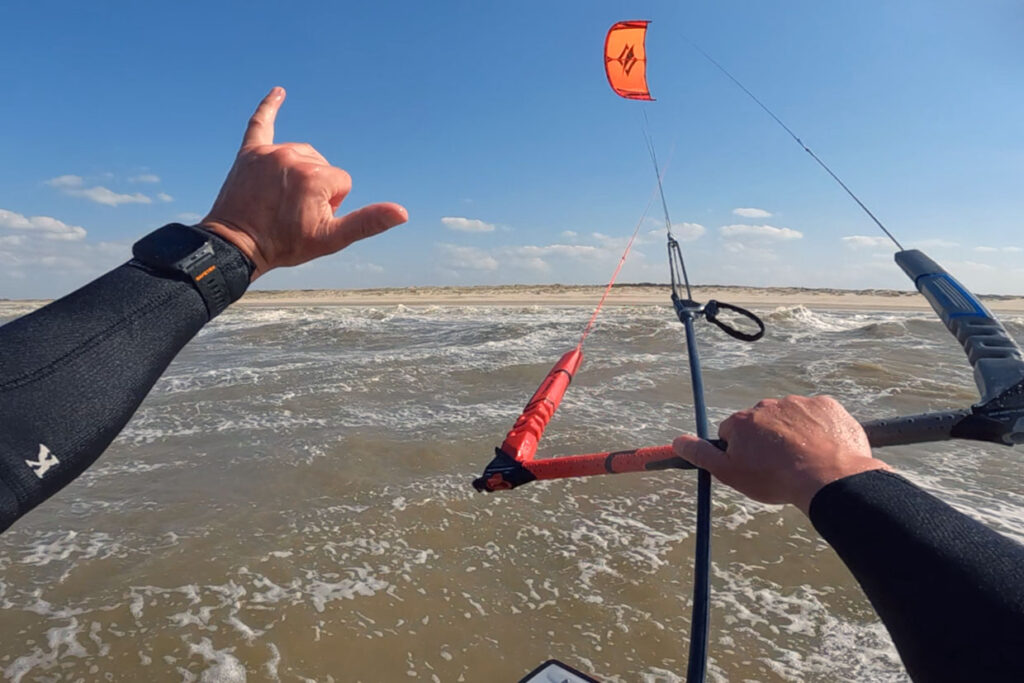
This image is property of kitesurfpro.nl.
Navigating
Observe Right of Way Rules
When kiteboarding in open water, it’s crucial to understand and observe right of way rules. Familiarize yourself with the local regulatory and safety guidelines, which usually follow similar rules to other sailing or watercraft activities. Generally, the upwind rider has the right of way, and the downwind rider must yield and maintain a safe distance. These rules help prevent collisions and maintain a safer environment for all water users.
Be Conscious of Other Water Users
Open water can be shared by various water users, including swimmers, boats, or other kiteboarders. To ensure a safe and harmonious experience, it’s essential to be aware of others in the water. Respect their space, avoid crossing directly in front of boats, and give swimmers or other water users a wide berth. Being conscious of other water users reduces the risk of accidents and creates a more enjoyable environment for everyone.
Maintain a Safe Distance
Maintaining a safe distance from other kiteboarders is crucial for both your safety and theirs. While the exhilaration of kiteboarding can tempt you to perform intricate maneuvers or ride closely to others, it’s important to keep a reasonable distance to avoid potential collisions or tangling of lines. Maintain a buffer zone around yourself and other riders, allowing enough space for everyone to safely maneuver and enjoy their kiteboarding session.
Avoid High Traffic Areas
In some kiteboarding spots, certain areas tend to attract higher concentrations of kiteboarders or water users. While these areas may offer better wind conditions or more challenging waves, they also pose a higher risk of accidents due to congestion. If you are a beginner or uncomfortable with crowded areas, it is advisable to avoid high traffic zones. Opt for less crowded areas of the water, where you can enjoy your session with fewer distractions and increased safety.
Communicate with Others
In addition to maintaining awareness of other water users, effective communication is key for a safe kiteboarding experience. Use hand signals, verbal cues, or whistle blasts to communicate with fellow kiteboarders if necessary. Effective communication can help prevent accidents or misunderstandings, particularly in situations where verbal communication is challenging due to wind or distance. Establish clear signals or gestures before your session to ensure smooth and safe interactions on the water.
Be Prepared for Changes in Water Depth
Navigating open water can lead to encounters with changing water depths, such as sandbanks, shallow areas, or sudden drop-offs. Pay attention to any visual cues, such as discolored water or changes in wave patterns, that may indicate a shift in water depth. Be mindful of potential hazards and adjust your riding and maneuvers accordingly. Keeping an eye on the water depth helps prevent accidents or collisions with underwater obstacles, ensuring a safer kiteboarding experience.
Emergency Situations
Maintain Control of Your Equipment
In any emergency situation during kiteboarding, maintaining control of your equipment is crucial. If you find yourself in a challenging situation, such as a sudden change in wind direction or a problem with your kite, focus on controlling your kite and steering it away from any potential hazards. Keeping control of your equipment reduces the risk of accidents and provides you with more options for a safe resolution.
Practice Self-Rescue Techniques
It’s essential to familiarize yourself with self-rescue techniques for situations where assistance may not be readily available. Learn how to pack down your kite properly and use it as a floatation device to help you safely return to shore. Practice these self-rescue techniques in controlled environments under the guidance of a certified instructor until you feel confident executing them independently. Self-rescue skills empower you to handle unexpected situations and ensure a higher level of safety during your kiteboarding sessions.
Signal for Help
In more severe emergency situations where self-rescue is not possible, it’s important to know how to signal for help. Carry a whistle or other signaling device that can catch the attention of fellow kiteboarders or people onshore. Three short blasts on a whistle or raising your arms above your head in an “X” shape are commonly recognized distress signals. Be familiar with these distress signals and use them when necessary to notify others that you require assistance.
Know Basic First Aid
Having basic first aid knowledge is valuable in any outdoor activity, including kiteboarding. Learn essential first aid techniques, such as CPR, treating minor cuts or scrapes, and how to handle potential injuries commonly associated with kiteboarding. Carry a basic first aid kit that includes adhesive bandages, antiseptic wipes, and any necessary personal medication. Knowing how to respond in emergency situations and administer appropriate first aid increases your preparedness and overall safety while kiteboarding.
Stay Calm
In emergency situations, it’s crucial to remain calm and composed. Panic can cloud your judgment and hinder your ability to make safe decisions. Focus on resolving the issue at hand by assessing the situation and taking appropriate measures. Remaining calm allows you to think clearly, react effectively, and increase the chances of a positive outcome. Remember, panic only exacerbates an already challenging situation, while a calm demeanor enhances your ability to overcome unexpected obstacles during your kiteboarding session.

This image is property of kitegeneration.com.
Hydration and Nutrition
Stay Hydrated
Kiteboarding is a physically demanding sport that can quickly deplete your body’s water reserves. Dehydration can lead to fatigue, decreased focus, or even more severe health issues. It is crucial to drink plenty of water before, during, and after your kiteboarding session to stay properly hydrated. Carry a water bottle or hydration pack with you and take small sips at regular intervals to maintain hydration levels. Staying hydrated ensures your body performs optimally and reduces the risk of heat-related illnesses.
Fuel Your Body
To sustain the energy levels needed for kiteboarding, it’s important to fuel your body with proper nutrition. Consume a balanced meal or snack before your session, focusing on carbohydrates for energy and proteins for muscle recovery. Pack easily digestible snacks, such as energy bars or fruits, to replenish energy levels during breaks. Avoid heavy meals that can cause discomfort while kiteboarding. Proper nutrition helps maintain endurance, enhances focus, and promotes overall well-being during your kiteboarding experience.
Avoid Alcohol and Drugs
To ensure a safe and responsible kiteboarding session, it is essential to avoid alcohol and drugs. These substances impair your judgment, slow your reaction time, and increase the risk of accidents or poor decision-making. Kiteboarding requires focus and coordination, making it unsafe to participate while under the influence of alcohol or drugs. Keep your mind clear and your body in optimal condition by abstaining from these substances before and during your kiteboarding session.
Equipment Maintenance
Regularly Inspect Gear
Regular inspection of your kiteboarding gear is crucial for its longevity and your safety. Before each session, meticulously examine your kite, control bar, lines, harness, and safety systems for any signs of wear or damage. Look for frayed lines, tears in the fabric, or any broken or faulty components. Address any issues promptly and replace or repair damaged parts before using the gear again. Regular inspections ensure that your equipment is in good working condition and reduces the risk of equipment failure while kiteboarding.
Replace Worn or Damaged Parts
As part of gear maintenance, it is important to replace any worn or damaged parts promptly. Pay close attention to the condition of your lines, as they are crucial for controlling your kite. Over time, lines may become stretched or weakened, impacting their performance and safety. Replace worn or damaged lines with new ones that meet the manufacturer’s specifications to ensure optimal kite control and overall safety. Don’t neglect other components such as safety releases or harness buckles, and replace them if they show signs of wear or malfunction.
Use Proper Storage
Proper storage of your kiteboarding gear not only prolongs its lifespan but also ensures your safety. After each session, thoroughly rinse your kite, lines, control bar, harness, and other gear with fresh water to remove any salt or sand residue. Allow them to dry completely before storing in a clean and dry area, away from direct sunlight or extreme temperatures that can degrade materials. Proper storage prevents corrosion, mold, or other damage that can compromise the performance and integrity of your gear.
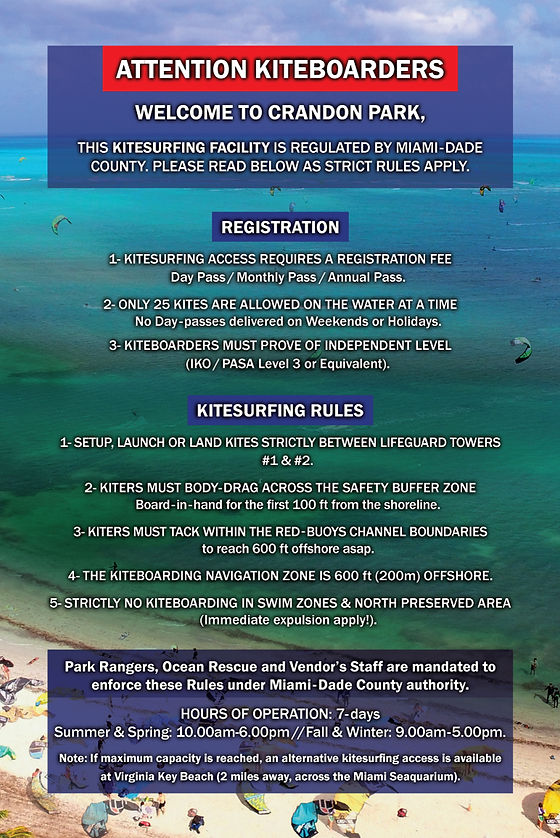
This image is property of static.wixstatic.com.
Know Your Limits
Don’t Overestimate Your Abilities
One of the most important safety measures when kiteboarding is to be honest with yourself about your skill level. Don’t overestimate your abilities, particularly when faced with challenging conditions or unfamiliar environments. Beginners should start in calmer waters, progressively advancing to more complex conditions as skills and confidence develop. Pushing beyond your current capabilities can lead to accidents, fatigue, or frustration. Knowing your limits and respecting them ensures a safer and more enjoyable kiteboarding experience.
Avoid Pushing Yourself Too Hard
While it’s natural to want to improve and progress in kiteboarding, it’s important to avoid pushing yourself too hard. Take breaks when needed, listen to your body, and rest if you feel fatigued or overwhelmed. Overexertion can lead to reduced concentration, decreased reaction time, and increased risk of accidents. Pace yourself and focus on gradual improvement and skill development, ensuring that you have a positive and safe kiteboarding experience.
Listen to Your Body
Your body is an excellent indicator of its capabilities and limitations. Pay attention to any physical or mental cues that signal fatigue, exhaustion, or discomfort. Overriding these signals can result in accidents or injuries. Take breaks when needed, hydrate, and replenish your energy levels. If you feel unwell or experience dizziness, consider ending your kiteboarding session. Listening to your body promotes safety, prevents accidents, and allows you to enjoy kiteboarding for many sessions to come.
Know When to Stop
It’s important to recognize when it’s time to stop kiteboarding for the day. Changing wind conditions, fatigue, or adverse weather can all signal that it’s time to end your session. Don’t be tempted to continue kiteboarding when conditions become unfavorable or risks increase. Make rational decisions based on the circumstances and trust your judgment. Knowing when to stop ensures your safety and sets the stage for future kiteboarding adventures.
Respect the Environment
Don’t Disturb Wildlife
As kiteboarders, it is crucial to respect the natural environment and not disturb the local wildlife. Avoid kiting in sensitive areas with protected species or habitats. Pay attention to any nesting birds or marine life, and keep your distance to avoid causing unnecessary stress or harm. Take pride in being a responsible participant in the environment you are enjoying and strive to leave it in the same or better condition than you found it.
Avoid Polluting the Water
Kiteboarding is a sport that relies on clean and healthy waters. Avoid polluting the water by disposing of any waste or trash responsibly. Use designated trash bins or take your trash with you when leaving the beach or kiteboarding spot. Avoid using harsh or toxic substances while cleaning or maintaining your gear, as they can enter the water system. By adopting eco-friendly practices, you contribute to the preservation of the environment and ensure the longevity of the sport.
Follow Local Regulations
Different regions may have specific regulations or guidelines for kiteboarding, particularly in protected areas or heavily frequented beaches. Familiarize yourself with these regulations and adhere to them diligently. Respect any restrictions on launching or landing areas, speed limits, or designated kiteboarding zones. Being a responsible kiteboarder not only prioritizes your safety but also demonstrates respect for the local community and helps preserve access to kiteboarding locations.
Support Conservation Efforts
As a kiteboarder, you can actively support conservation efforts to protect the environment you love to kite in. Volunteer your time for beach cleanups or participate in environmental initiatives focused on preserving water quality or protecting marine life. Educate yourself and others about sustainable practices, such as reducing plastic usage, and be an ambassador for responsible kiteboarding. Supporting conservation efforts safeguards the ecosystems that make kiteboarding possible and ensures a vibrant future for the sport.
By following these safety measures and adopting a responsible approach to kiteboarding in open water, you can enhance your enjoyment of the sport while minimizing potential risks. Ultimately, prioritizing safety allows you to fully immerse yourself in the exhilarating experience of kiteboarding, surrounded by the beauty and freedom of the open water.
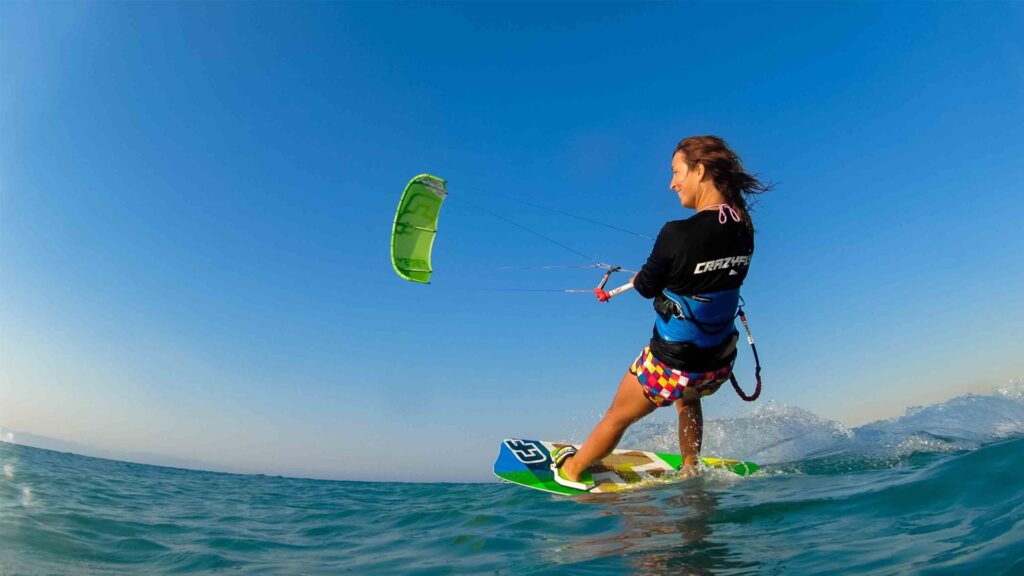
This image is property of safewatersports.com.

